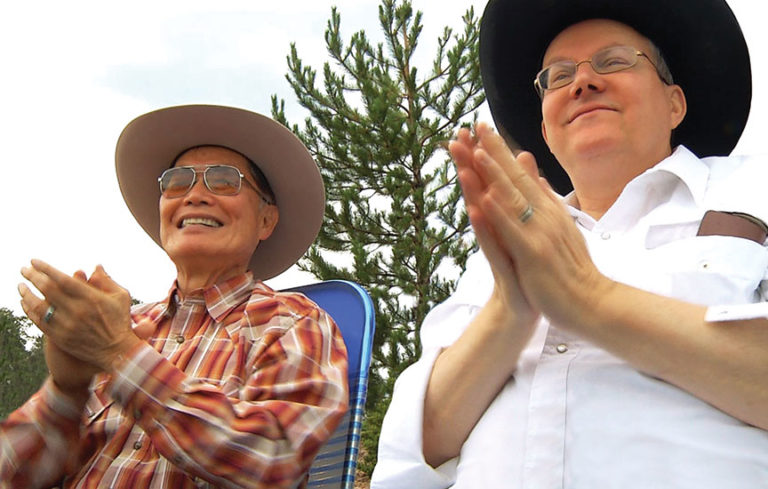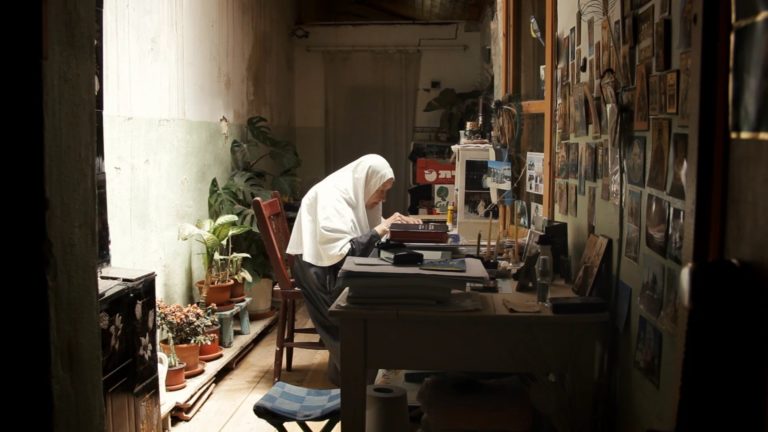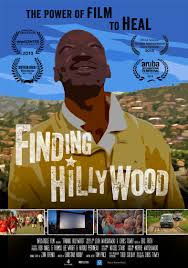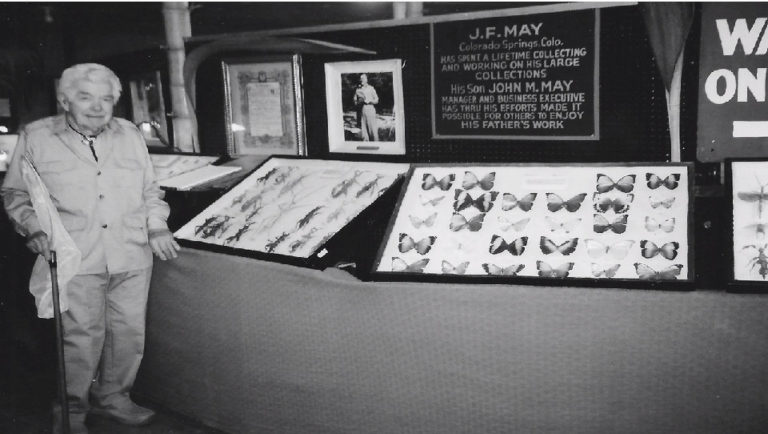George Takei was always searching for the perfect role – only to find it within himself.Jennifer Kroot’s TO BE TAKEI follows Takei and his husband Brad, capturing their day-to-day as they prepare for Takei’s dream project, ALLEGIANCE, a musical based on his harrowing childhood experiences inside a Japanese American internment camp during World War II. Intertwined with this narrative is a look into Takei’s life history, from his rise to fame as helmsman Hikaru Sulu on the iconic television series, STAR TREK, to his advocacy for marriage equality and civil rights across the United States. What emerges is a portrait of an outspoken activist who utilizes wit, whimsy, grace and humor to bring attention to the sorrows of his past and the joys of love and creativity in his present. Featuring interviews with STAR TREK’s William Shatner, Leonard Nimoy, Nichelle Nichols, and Walter Koenig, plus journalist Dan Savage and radio host Howard Stern, TO BE TAKEI shows Takei as he’s never been seen before.
Summary info for schedule – will be hidden on film page
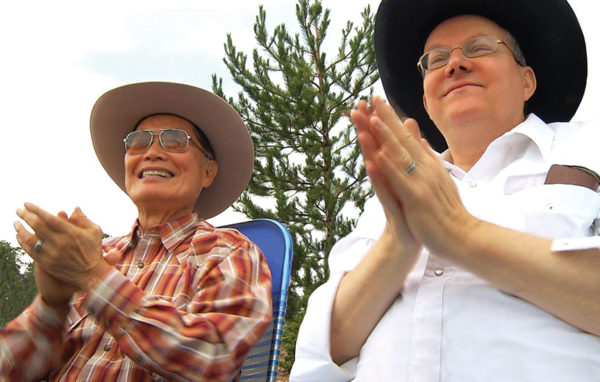
To Be Takei
93-minutes
Screening day / time
To Be Takei
To Be Takei
Filmmaker Notes:
Q&A with Jennifer KrootHow did you get involved with the project? Was it your idea or did George and Brad recruit you? Had you always been a fan of all things STAR TREK?Jennifer Kroot: It was my idea. I had always been a fan of the original STAR TREK. I watched the reruns when I was a child… and when I was older too! I love the combination of theatricality and camp mixed with serious social issues.I became more aware of George after he came out in 2005 at age 68. Not only did he come out, but he immediately became an LGBT spokesperson and I often heard him on news shows. (And that was before it was cool to come out—not that it’s easy now, but certainly easier.) I was really impressed with George’s eloquence and quick wit. Then I read his autobiography about being imprisoned as a child in a Japanese American internment camp, and I couldn’t stop thinking about how amazing his life is. I decided I had to ask about making a documentary portrait of him. I was compelled and obsessed.The film is quite an intimate look at George and Brad’s lives. Did you determine ground rules about filming? Was anything ever off-limits?JK: Honestly, nothing was off limits. We never discussed ground rules. I made an effort to try to make the Takeis feel comfortable, but it can’t be that comfortable to be followed around by a camera crew. It took some time to get to know each other, and as we did, we filmed more… and they revealed more. It’s an interesting way to get to know someone.When you started filming, how did you plan to structure the film? Did you envision it would center on the internment story and that you would film George’s eventual return to Arkansas, or did those things just happen? How much changed over time?JK: I knew that we’d have George’s linear history, including the internment camp experience, but I didn’t anticipate the specific pilgrimage back to Arkansas. I had a general idea of what the “threads” of the film would be (George’s historical timeline, the making of the musical “Allegiance,” George and Brad’s love story), but I just followed George. The Takeis would tell me what their schedule entailed, and when things resonated with me, we came along and filmed.It’s hard not to anticipate what you want to happen, but I think it’s best to be open to surprises. The general film that I envisioned stayed the same (although it was complicated to create the structure of such a dynamic and complex life), and the specifics evolved over time. It’s a really dense film, because George’s life is and has always been dense. I always wanted it to have a very layered structure.Was there a “lightning-strikes” moment during filming, for better or for worse?JK: There was a moment in the greenroom at Emerald City Comicon where George greets another STAR TREK actor and blurts out, “You’ve really gained weight.” I knew it would be thrilling for STAR TREK fans to see this. (You have to watch the film to see who it is!) The nice thing is that Brad really comes to the rescue of the actor and puts George in his place.Who was your most memorable interview for the film?JK: Well, there were some amazing interviews for this film: Leonard Nimoy, William Shatner, Senator Daniel Inouye, before he passed. It was incredible to speak with these people… But the most memorable interview by far was Howard Stern. I had to do the interview live on “The Howard Stern Show”; I was terrified for about two weeks. The show has an audience of 12 million—and, of course, Howard has a reputation for humiliating people—but it turned out to be really fun. I had a great time, and Howard said really insightful things about George. It was a totally surreal experience!How long did you spend filming? George just seems to make everyone he meets completely happy. What was it like to see him interact with his fans?JK: The whole process of meeting the Takeis and making the film has taken a little over three years. We filmed every month or two for several days, depending on what the Takeis were up to. Most of the last year was spent on editing and post-production, with just a couple shoots.George makes everyone he meets happy. It’s true. He’s very gracious about it. He’s sort of like the Dalai Lama of pop culture. A lot of people really admire what he’s been through and how he remains relentlessly positive, despite having faced some major obstacles and discrimination.It’s pretty wild to watch him interact with his fans. George is always very present with everyone. He’s a good listener and often offers thoughtful and reasonable suggestions to people. You can see how meaningful his words are to fans; sometimes they are moved to tears. His fans frequently thank him, whether it’s for his civil rights activism or just for funny jokes on Facebook.The film is quirky, funny and charming, just like George. But there is a serious side as well. How much did you know about George’s time at the internment camps during WWII? What surprised you most about your research?JK: What I like about George is that he has quite a range and quite a reach. He can make lighthearted jokes on Facebook, say outrageous things about his sexlife on Howard Stern, and then appear on MSNBC talking about his concerns about the Sochi Olympics all in one day! His range is A to Z, from professorial and serious to completely politically incorrect and outrageous. He’s like Barack Obama meets Mr. Rogers meets John Waters.I learned a lot about the internment camps while making this film. It’s truly unbelievable that people in the U.S. had all of their civil liberties suddenly taken away. What surprises me the most is how unaware and uneducated most Americans are about the topic of the internment.There were many egregious things about the internment… but if I had to pick one thing, it was that the Japanese Americans were forced to take a Loyalty Questionnaire after they had already been imprisoned for a year. It’s covered in the film, because this ended up impacting the Takei family: George’s parents refused to pledge their loyalty in the offensive questionnaire and they were then sent to a high security internment camp (Tule Lake) that actually had martial law at times. The U.S. government spent a lot of money holding American families in high security prison camps.The internment camps are a black eye on recent American history, with so much emotion still simmering just below the surface. Was it easy to track down archival materials from that time, or were they hidden away (for example, the horribly racist propaganda)?JK: There are several Japanese American organizations that have thoroughly archived this material, so it’s accessible if you know where to look. We worked with The Japanese American National Museum, The Japanese American Museum of San Jose and several other organizations to find the footage and images. You can find some of it online too.George is a huge sensation—and a completely refreshing and beloved presence—on Facebook (and Twitter). Had that already happened when you started filming, or did you witness that from the start? Was he comfortable with social media right away?JK: George was not on social media when we started filming, believe it or not. It was insane to see how quickly he became a social media phenomenon! I think it’s great that he’s reinvented himself this way. He’s 76 and completely unafraid of new technology, and now he even hosts an online tech show for seniors. He was comfortable with social media from the beginning, or that’s how it seemed to me.George Takei is a trailblazer who has overcome prejudice on so many fronts, recognized as a leading role model for both Asian-Americans and gays. What do you think makes him so resilient and positive?JK: I wish I knew! I’d like some! I think it was the experience of being interned and watching what his parents had to go through to rebuild their lives after the internment. I think that George is grateful to them for making sure that he and his siblings had “normal” childhoods, even while they were imprisoned. I think that’s why George works so hard to educate people about the internment, and civil rights and civil liberties, and most recently LGBT civil rights such as marriage equality.George’s father taught George to be civic minded and not to take our democracy for granted. Perhaps having been imprisoned as a child and seeing his family gives some perspective to his outlook. He knows what’s important.There’s also a Japanese word, “gaman” (discussed in the film), which generally means “to endure with dignity.” This was the attitude that the Japanese Americans had during the internment. George really understands how to endure and be patient and dignified when he is confronted with obstacles. He learned this at a very young age, and I think it’s difficult to have this quality or understanding without being exposed to it early in life.What’s the story between Takei and Shatner? They have had a very public rivalry for years (decades?). Is it for real?JK: Oh, my! Well, I would say that the STAR TREK actors are like family members. We all have families and we know what that’s like: you get along with some family members better than others, but you’re bound. I would say that George isn’t particularly close to Bill, but like it or not, they are forever bound by STAR TREK. I don’t think they lose any sleep at night being angry at each other, but let’s say they don’t do a lot of socializing, outside of conventions. I really appreciated Bill Shatner’s willingness to be interviewed in the film. He’s a great sport. And I loved meeting him!
Film details
Year(s) screened
- 2014
